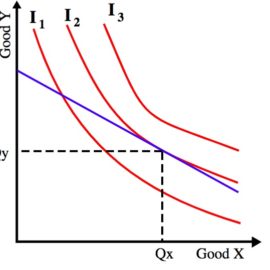

This article is an excerpt from the Shortform book guide to "Story" by Robert McKee. Shortform has the world's best summaries and analyses of books you should be reading.
Like this article? Sign up for a free trial here.
What is the subversion of expectation? How does it keep a story going? How does it impact the audience?
One of the main ingredients in a story is the subversion of expectation. This element is extremely important. Robert McKee maintains that it’s the source of all energy in a story.
Read more to understand what subverting expectations means and how to do it in a story.
Constant Subversion of Expectation
The purpose of a story is to give the audience the satisfying feeling of discovering meaning about the world. But how exactly does a story accomplish this? According to McKee, to engage an audience’s sense of meaning, a story needs three things:
- An active protagonist to empathize with
- The constant subversion of expectation
- Positive or negative change
Stories need an active protagonist who constantly makes progress toward a goal. However, if events transpire exactly as the protagonist expects, they would simply achieve that goal, and you wouldn’t have a story. Therefore, the most basic unit of storytelling is this: The protagonist takes a single action toward a goal, and the world reacts in a way the protagonist doesn’t expect, complicating the protagonist’s plan to achieve their goal. This pair of action and reaction is called a beat.
For example, here’s a beat from Finding Nemo: As Marlin watches his son Nemo swim out into dangerous open waters, he yells, “You’re going to get stuck out there!” in an attempt to scare Nemo back to safety. Angered by his father implying that he’s weak, and determined to prove him wrong, Nemo swims farther out into more dangerous waters. Marlin’s action provokes an unexpected reaction from Nemo, introducing new complications between Marlin and his goal.
(Shortform note: The idea of story beats is common among screenwriters, although McKee uses this word in a more specific sense than most. Most screenwriters use beat as a general term to mean “something that happens in your story.” Arguably the most popular use of the word beat comes from Blake Snyder’s screenwriting guide Save the Cat!, which contends that all successful stories follow the same 15 beats. Snyder recommends the use of a “beat sheet” to outline your screenplay, which specifies what events need to happen in your script and what page they should happen on.)
How the Subversion of Expectation Impacts the Audience
McKee asserts that beats of action and unexpected reaction need to occur constantly throughout your story because they engage your audience on both an intellectual and emotional level.
On an intellectual level, the subversion of expectation piques the audience’s curiosity. For the majority of beats, the audience and protagonist both have their expectations subverted at the same time, says McKee. Unless the writer has given the audience information that the protagonist doesn’t know (a technique called dramatic irony), each turn of events will surprise the audience just as much as the characters. Thus, since what the audience expected to happen didn’t happen, each beat draws them further into the story as they wonder what’s going to happen next.
McKee explains that the subversion of expectation also engages the audience intellectually by giving them insight: They realize something about the protagonist’s world that they didn’t know before. To make sense of this surprising information, they think back to what the storyteller has already told them and integrate everything into one cohesive understanding of the world. This worldview revision satisfies the audience on an intellectual level—it feels like they’re solving the puzzle that the writer has laid for them.
For example, when Nemo swims farther out to sea, the audience immediately tries to make sense of it by reflecting on what they’ve already seen and thinking, “Oh, it makes sense that Nemo is rebelling. From what I’ve seen of him, it’s clear that he resents his father’s overprotectiveness.” Connecting these logical dots is satisfying.
On an emotional level, a beat of action and unexpected reaction impacts the audience because of their empathy for the protagonist, McKee explains. When something unexpected happens to the protagonist, they’ll have some kind of emotional reaction, and the audience will feel it just as they do.
| When Surprising Beats Ruin Your Story Although surprising beats spark your audience’s curiosity, you shouldn’t try to make your story the most unpredictable it can be at all times. Plot twists that invalidate the facts you gave the audience earlier in the story are by nature unpredictable, but they cheapen the meaning of the story so far and make the audience feel unfairly manipulated. For example, a movie that ends with the revelation that the entire story was a drug-induced hallucination could be disappointing to the audience. Bad plot twists hurt even more if they spoil the emotional bond audiences have with characters. For example, often, writers try to surprise the audience by having characters reveal false identities or hidden motivations. If these new character traits contradict the character the audience has been bonding with for the entire story in an unrealistic way, the audience will be even more upset. Furthermore, some degree of predictability in your story can be a good thing. Although all compelling stories involve the subversion of expectation, the surprise itself isn’t entirely what makes a story compelling. Surprise is satisfying also because it gives the audience insight, revealing information that makes the story’s “big picture” more complex and interesting. Research validates this idea. One study shows that readers enjoy stories more when they already know what’s going to happen in them. Experiencing a story while knowing its twists doesn’t spoil anything because this foreknowledge helps you see the big picture and appreciate the story as a whole while watching, which can be more enjoyable than piecing the story together through insight and reflection. The fact that stories are compelling even if you know what’s going to happen enables writers to use dramatic irony. Writers intentionally reveal information that’s unknown to the characters to achieve a number of different effects—for example, when the climactic murder of Lester Burnham in American Beauty is revealed at the beginning of the film, it makes the audience more likely to empathize with the character, who is initially very unsympathetic. |

———End of Preview———
Like what you just read? Read the rest of the world's best book summary and analysis of Robert McKee's "Story" at Shortform.
Here's what you'll find in our full Story summary:
- A guide for screenwriters on how to write a gripping story
- How to engage an audience on an emotional and intellectual level
- The three-step process for how to write a story






